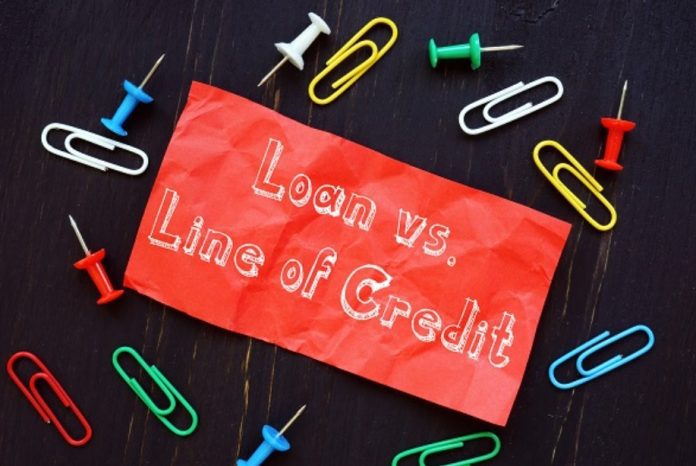When it comes to financing your unexpected bills and emergencies, there are a lot of different options available. You can get a loan from a bank, or you can take out a line of credit. So, which one is the best option for you? In this article, we will compare line of credit vs loans and help you decide which is the better choice for you.
What is a line of credit?
A line of credit is a type of loan that allows you to withdraw funds up to a certain amount. Unlike a traditional loan, you only pay interest on the amount that you borrow, and you can choose when and how much to borrow.
Lines of credit are often used for expenses such as home renovations or consolidating debt. They can also be useful for covering unexpected costs, such as medical bills or repairs. Because lines of credit typically have lower interest rates than credit cards, they can be a more economical way to finance unexpected costs.
When applying for a line of credit, it is important to shop around and compare interest rates and terms. Be sure to read the fine print carefully before signing any documents.
If you are looking for a line of credit then you might consider Drafty, which is a reputed direct lender in UK.
How does a line of credit work?
Much like a credit card, a line of credit typically has a variable interest rate and requires monthly payments. However, lines of credit generally have lower interest rates than credit cards and may offer more flexible repayment terms.
Borrowers should be aware that missing payments can damage their credit score and may lead to the loss of the line of credit. When used wisely, a line of credit can be a valuable financial tool.
What are the benefits of a line of credit?
One of the main benefits of a line of credit is that it provides borrowers with flexibility. Unlike a payday loan, which must be repaid in full, a line of credit can be paid back over time, and borrowers only need to make payments on the amount of money that they have borrowed. This type of loan can also be used as needed, which means that borrowers only need to pay interest on the funds that they have actually borrowed.
Another benefit of a line of credit is that it usually has a lower interest rate than a credit card. This makes it an ideal option for those who need to borrow money for large purchases or for individuals who want to consolidate their debt.
What are the risks of a line of credit?
The risks of a line of credit depend on how you use it.
- If you use it to consolidate debt, you may end up with a higher interest rate and more debt than you started with.
- If you use it for emergencies, you may find yourself in a difficult financial situation if you are unable to make payments on time.
- Line of credit can also be used to fund large purchases, such as a home renovation. If you are unable to make the payments on time, you may risk degrading your credit rating.
In general, the risks of a line of credit depend on how responsible you are with your spending. If you are able to control your spending and make timely payments, a line of credit can be a valuable tool. However, if you are not careful, a line of credit can lead to more debt and financial problems.
What is a loan and how does it work?
A loan is a sum of money that is borrowed from a lender and must be repaid, with interest. The terms of the loan will vary depending on the borrower’s creditworthiness and the lending institution’s policies.
Loans can be used for a variety of purposes, including home purchases, vehicle repairs, or business expansion. In most cases, the borrower will be required to make regular payments to the lender until the loan is paid in full.
Once the loan is repaid, the borrower will regain ownership of the collateral (if any).
Loans can be either secured or unsecured. A secured loan is one that is backed by collateral, such as a home or a car. This type of loan usually has a lower interest rate because the lender has less risk. An unsecured loan is not backed by collateral and often has a higher interest rate.
Borrowers with good credit may be able to qualify for an unsecured loan with favourable terms.
What are the benefits of taking out a loan from a direct lender?
There are a few benefits of taking out a loan from a direct lender.
- One benefit is that the process is often faster because there are no middlemen involved.
- Another benefit is that you may be able to negotiate a lower interest rate since direct lenders are typically more willing to work with borrowers on this.
- Additionally, direct lenders often have more flexible repayment terms, which can be helpful if you need to make some adjustments to your budget down the road.
- Finally, by working directly with a lender, you can get a better sense of their customer service and what to expect if you ever have any questions or issues with your loan.
Overall, taking out a loan from a direct lender can save you time and money in the long run.
What are the risks associated with loans?
Loans can be a helpful way to finance major purchases or unexpected bills, but there are also risks associated with taking out a loan.
- One of the main risks is that you may not be able to make the monthly payments. If you miss even one payment, you may be charged late fees or your interest rate could increase, making it even harder to catch up.
- Another risk is that you could end up owing more money than the original loan amount if you only make the minimum payments.
- And, if you default on the loan, your lender could take legal action against you.
So, while loans can be a useful financial tool, it’s important to understand the risks before taking one out.
Which option is better for you — a line of credit or loans?
There is no one answer to this question. The best option for you will depend on your individual financial situation and needs.
If you need money for a large purchase or unexpected expense, a loan may be the best option. But, if you need flexibility or want to avoid accruing more debt, a line of credit may be a better choice.
No matter which option you choose, it’s important to do your research and compare interest rates, fees, and repayment terms before making a decision.
Disclaimer: This article contains sponsored marketing content. It is intended for promotional purposes and should not be considered as an endorsement or recommendation by our website. Readers are encouraged to conduct their own research and exercise their own judgment before making any decisions based on the information provided in this article.

























![“Does Everyone Hear Me OK?”: How to Lead Virtual Teams Effectively iStock-1438575049 (1) [Converted]](https://www.europeanbusinessreview.com/wp-content/uploads/2024/11/iStock-1438575049-1-Converted-100x70.jpg)






